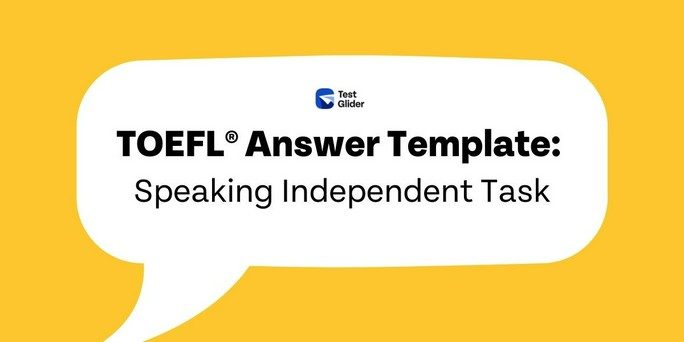The speaking section is the third section of the TOEFL test. It has 4 different question types, including one independent question and three integrated ones.
Since you only have limited time to prepare your answer, improving your scores in the speaking section can be tough. To help you with that, I have come up with structure templates that can help you score higher in the speaking section. With this template in hand, all you need to do is come up with creative and logical reasons. The template is here to do the rest.
This blog post is part of a series where I post templates for all TOEFL Speaking and Writing questions. As a part of this series, I will introduce you to structure templates for 4 speaking and 2 writing tasks, along with model answers written based on those templates.
This is the third post: How to respond to TOEFL speaking independent tasks.
Before beginning, here is the question the model answer is based on:
Do you agree or disagree with the following statement? The ability to write and read well is more important today than in the past. Use specific reasons and examples to support your answer.
And this is the TOEFL Speaking Independent Task model answer:
I agree that the ability to write and read well is more important today than in the past for two reasons.
Firstly, this ability is essential for economic development. In today’s society, it is much more essential to have these skills in order for people to keep their jobs compared to the past where literacy was not required as much. If you don’t have a job and a stable income, then you won’t be able to contribute to society.
Secondly, the ability to read and write is important for personal development. This is because you need good reading and writing skills in order to gain knowledge. For example, in order to acquire knowledge from books, you must be able to read well. And if you want to communicate with someone far away or ask for some kind of information, you need writing skills.
Let’s take a look at the introduction first:


Opinion: The introduction part of your speaking independent answer should be as short as possible. Do not try to add in irrelevant details because you have to save as much time as you can for explaining your reasons. In the introduction, state your opinion to show what the rest of your answer is going to be based on.
Moving on to reasons:


Reason: This part is where you state the reasons that support your opinion. For example, if you said you agree that A is better than B, you need to state why you think so. The reason should be stated in the first sentence before you move on to the details.
Transition Words: Make sure you start with a transition word before you state your reasons. This makes your answer sound structured and it is easier for the listener to understand and follow your logic.
Supporting Details: This is the part where you provide details to support your reason. First, you provide a reason as to why you think a certain way. Then in supporting details, you explain why that reason makes sense.
Example: This is where you show that your reason is actually realistic and logical by providing an example. It is quite similar to how you would write a TOEFL independent essay in the Writing section. Let’s look at reason 2 as an example:

The speaker agreed that the ability to read and write well is more important today than before, and then stated a reason to show why he agrees with that opinion. The reason they provide is that the ability to read and write can help with personal development.
To further support their reason, they explain that you need reading and writing skills to acquire knowledge. They finish their argument with two examples, one about books and the other about communication, to show how the ability to read and write helps with knowledge acquisition and thus aids personal development.
You do not need to have an example for every reason you state in your answer. If your supporting details are solid and logical, you can skip the example part. However, it is always nice to include one if you have enough time left.
So the structure of your answer would look something like this:

You may have noticed that this model answer does not have a concluding sentence. This is because conclusions are totally optional. If you have an extra 5 seconds left to answer, you can always include a concluding sentence. However, if you do not have enough time, don’t try to include a conclusion.
You won’t lose marks for not having a concluding sentence but you may lose marks for not being able to finish within the time limit. At the end, make sure your reasons are persuasive and that your supporting details and examples are logical.
This concludes today’s post. See you in the next post!
